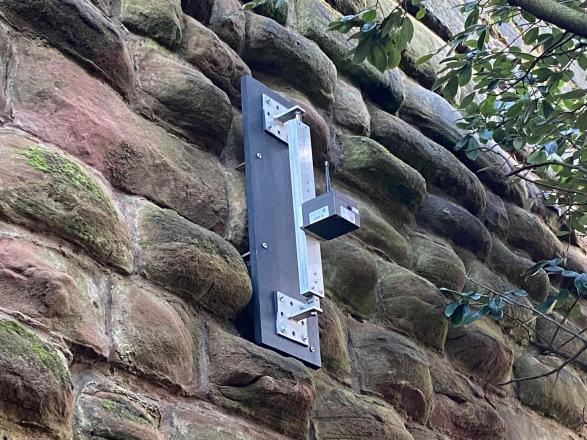Chester City Walls – Structural Monitoring
Challenge
Chester is the only city in Britain that retains the full circuit of its ancient defensive walls. About two miles in length, the Roman walls were first built nearly 2000 years ago, and today provide a popular tourist activity for visitors to see the sights of the city as they walk along the historic structure.
In January 2020 a section of the wall collapsed suddenly. Repair works would need to be undertaken on the collapsed section of the wall. It was first necessary to prop the wall in two phases to provide support and mitigate further collapse. There was a necessary requirement to monitor the movement of the wall during repair works to ensure safety of the workers on site.
Solution
Ramboll’s specialist conservation engineers have been involved with the conservation and routine repair works of Chester’s city walls since 2008, inspecting and managing the sites to ensure good conservation practice is followed using traditional materials.
Shortly after the 2020 collapse, Cheshire West and Chester Council commissioned Ramboll to offer their expertise in repairing the wall and finding a construction monitoring solution. The use of a traditional monitoring system would not be ideal. A constant near real-time data feed with alerts of movements would be necessary to ensure safety to workers on site.
Ramboll and main contractor, Ringway selected Senceive Triaxial Tilt Sensors to measure the movements of the wall during repair works. Data was relayed from the tilt sensors to cloud-based visualisation software WebMonitor™ via mains powered Gateway.
A Senceive FlatMesh™ network platform for the nodes was chosen to for this site – with no hierarchy, if one node stopped functioning due to vandalism or damage, the nodes identify the next most efficient route to the Gateway. The system requires little to no maintenance.
Reporting rates can be changed remotely down to sub-minute, if required, as construction work or risk levels increase, for example. Following decommissioning, the system can be reused on other projects with minimal additional costs or alterations. With the FlatMesh™ system, additional sensors may be added to the network automatically once configured with the Network ID.
Ten wireless Triaxial tilt sensors were installed – half on mounts on the walkway pavings on the top of the wall, and half on tilt beams on the wall parapet. The beams were spaced approximately 2 metres apart and the use of the beams with the tilt sensors gives a truer representation of how the wall is behaving.
Outcome
Ramboll is now able to view their data on Senceive WebMonitor™ software, allowing the project team to remotely check the structural health during ongoing repair works. Fay Newham, Project Associate at Ramboll comments, “The monitoring portal is easy to use and allows us to check on the site from our desks. This was especially useful during lockdown and other periods working from home.”
Any discrepancies or movements beyond the established threshold values trigger an alarm that is sent to nominated stakeholders. “We know the alerts work well as we have had a few incidents of vandalism and also some further loss of material around the edges of the collapse. The thresholds can be altered if the sensitivity is too great,” says Fay.
Based on the success of the sensors at the City Walls collapse site, Senceive technology has now been incorporated into investigations and repairs at another City Walls location: Northgate. A number of Triaxial Tilt Sensors were installed to the outer leaf of the wall to monitor any movement during the works. As the project scope only included a temporary repair, the sensors remain in place to provide live and continuous data to monitor the performance of this interim repair whilst a permanent solution is developed.
Another benefit Fay cites is the ability to monitor trends over time. “Initially we wanted to monitor for safety reasons; the sensors are awake 24 hours a day and don’t get distracted. But we can also now look for long-term trends, seasonal and diurnal movements, which help us understand the way the structure is behaving.”
Downloads
Created on: Sat 19th Feb 2022



Initially we wanted to monitor for safety reasons; the sensors are awake 24 hrs a day and don’t get distracted. But we can also now look for long-term trends, seasonal & diurnal movements, which helps us understand the way the structure is behaving.
















